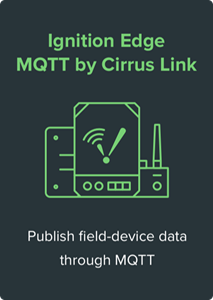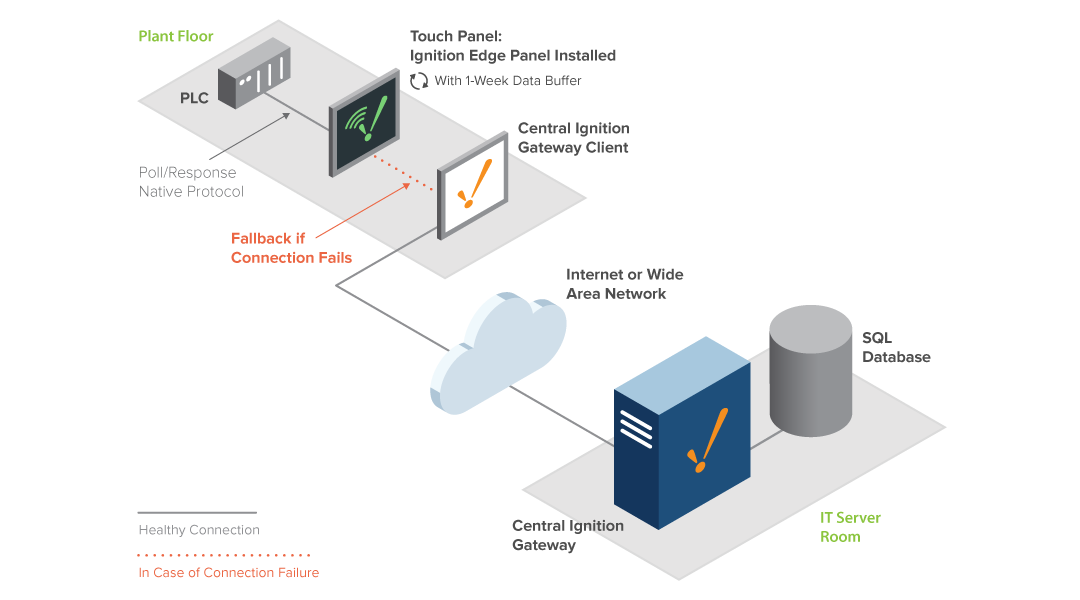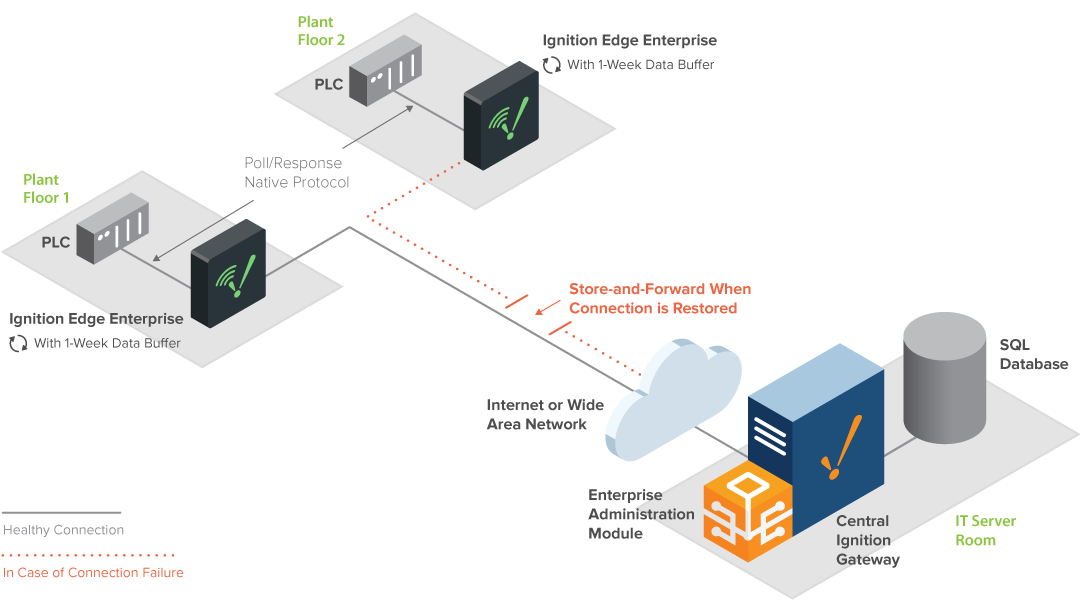Ignition Edge
Welcome to Edge
Edge is a new, stripped down version of Ignition that is specifically designed for use as an Edge of Network device.
There are currently three Ignition Edge plugins that can be used: Panel, Enterprise, and MQTT. Each offers its own features and you can combine them however you'd like to create the system you need. Often, Panel and Enterprise and used together to create a simple way to keep local fallback terminals up to date.



Panel
Ignition Edge Panel enables edge-of-network-HMI functionality. This includes:
- One local client
- One remote client
- Alarming features, including one-way email notification
Ignition Edge Panel includes one week of data buffering for trending and local client fallback for mission-critical applications.

Enterprise
Ignition Edge Enterprise acts as a limited remote server that synchronizes data from the edge of the network to a central Ignition server. It has Distributed Tags, history, and remote alarming built in. Remote backup, restoration management, and centralized monitoring of performance and health metrics are also available if the Ignition Enterprise Administration Module (EAM) is installed on the central Ignition server. Edge Enterprise comes with up to one week of data buffering so it can be used to store-and-forward your data to a central server in case of network failure.

MQTT
Ignition Edge MQTT by Cirrus Link turns virtually any field device such as a touch panel or a client terminal into a lightweight, MQTT-enabled edge gateway that works seamlessly with Ignition IIoT. Ignition Edge MQTT uses the highly efficient MQTT protocol to transmit data to any MQTT broker and supports the Sparkplug data-encoding specification.

What's Different About an Edge Gateway?
All Edge installations are a limited version of the Ignition platform for a significantly reduced cost. This helps keep things simple, and these installations can always work with other full versions of Ignition if you need additional functionality. There are a lot of visual changes to the Gateway Webpage, and many pages have been removed to avoid confusion. You can see below that after installing Edge, the traditional orange Ignition logos are replaced with new green Edge logos so a gateway can be easily identified.

Licensing
The new Edge version of Ignition has a separate license that works in the same way as a traditional Ignition license. The Edge license will not work if you attempt to activate it on an Ignition Gateway as it is only setup to license an Edge Gateway and its modules. However, you can activate a full Ignition license on an Edge Gateway, but this is not recommended due to the limitations of the Edge platform not being able to fully utilize the unlimited nature of an Ignition Gateway. Additionally, once a license has been activated on an Edge Gateway, the trial time for any unlicensed Edge plugins will be removed, and you will not be able to access them.
Projects
Edge installations only ever have one project. It is automatically created if it did not exist, and cannot be removed.
Database Access
Database access is disabled. This means that any database queries or bindings will not work, and that the user sources that require a database connection will not be available. The Status and Configure pages of the Gateway Webpage have been updated to remove these features and reduce confusion. Despite this restriction, some "historical" storage can happen inside of Ignition.
One Week of Internal Storage
- Tag History - Up to one week or 10 million data points of history can be stored locally. Pruning will automatically happen, and the historian is automatically enabled and not configurable.
- Alarm Journal - The alarm journal will store all alarm events locally for one week of events. There are limited configuration options.
- Audit Logs - Like the Alarms, the Audit log is limited to one week of local storage. It can't be configured.
Gateway Scripting
All Gateway level scripting is disabled, including Gateway Event Scripts and Tag Event Scripts. This does not affect project or client scoped scripts.
Gateway and Project Backups
Making a Gateway backup in an Edge installation will work perfectly in other Edge installations. Edge Gateway Backups are not compatible with Ignition Gateways, so you may not take an Edge Gateway Backup and restore it on an Ignition Gateway. You may also not take an Ignition Gateway Backup and restore it on an Edge Gateway.
However, you will still be able to export Tags, Windows, and other project resources in the Designer from full Ignition Gateways, and import them into an Edge project, or vice versa.
Tag Limit
There is a strict 500 Tag limit in an Edge Gateway. Any Tags added to the Tag Browser above that limit will not work until others are removed. Folders, UDT Definitions, UDT Instance Tags, and Client Tags are not included in that Tag count.
OPC Limitations
The internal OPC-UA server in the Edge Gateway acts only as a client and not as a server. This means Edge can connect to other outside OPC servers as a client to fetch data, but can not act as an OPC-UA server for outside programs to connect to.